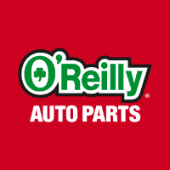-
Welcome to Auto Parts Forum
Whether you are a veteran automotive parts guru or just someone looking for some quick auto parts advice, register today and start a new topic in our forum. Registration is free and you can even sign up with social network platforms such as Facebook, X, and LinkedIn.
Raybestos Performance Specialty Disc Pads
-
Similar Content
-
- 0 replies
- 1,827 views
-
-
Similar Topics
-
By Clifford Auto Parts
Every time you start your car, accelerate on the highway, or cruise through city streets, there’s a silent genius at work ensuring everything runs smoothly—the Engine Control Module (ECM). While it may not be the most glamorous part of your vehicle, the ECM plays a critical role in ensuring your car performs at its best.
Let’s dive into the world of ECMs to understand why this small but mighty component is so important and how it impacts your driving experience.
What Exactly is the ECM?
The ECM is often referred to as the brain of your car, and for good reason. It’s a sophisticated computer that processes data from various sensors throughout your vehicle. These sensors monitor critical factors like air intake, engine temperature, fuel levels, and more.
The ECM uses this data to make real-time adjustments to ensure your engine runs efficiently. For example, it determines the exact amount of fuel your engine needs and adjusts the air-to-fuel ratio for optimal combustion. Without it, your car would struggle to start, run inefficiently, or even fail to comply with emissions standards.
Why the ECM Matters
It’s easy to overlook something as technical as an ECM, but this little device affects almost every aspect of your driving experience.
Fuel Efficiency
If you’ve ever wondered how modern cars manage to go further on a gallon of gas, the ECM is part of the answer. It fine-tunes fuel delivery to maximize efficiency, saving you money at the pump.
Performance
Whether you’re accelerating onto the freeway or climbing a steep hill, the ECM ensures your engine delivers the power you need when you need it.
Emissions Control
The ECM helps reduce harmful emissions by carefully managing the combustion process. This not only keeps the environment cleaner but also ensures your car meets legal standards.
Diagnostics
When something goes wrong, the ECM doesn’t just sit idly by. It records fault codes that mechanics can use to pinpoint issues quickly. That check engine light? It’s often the ECM trying to tell you something needs attention.
Signs Your ECM Might Be in Trouble
Like any other electronic component, the ECM isn’t immune to wear and tear. If your car is experiencing any of the following symptoms, it might be time to have your ECM checked:
Difficulty Starting: A failing ECM may struggle to regulate fuel delivery, making it hard to start your car. Poor Performance: If your engine feels sluggish or unresponsive, the ECM might not be doing its job. Unusual Fuel Consumption: A faulty ECM can disrupt fuel efficiency, leading to higher costs at the pump. Check Engine Light: While this can indicate many issues, an ECM problem is one possibility. Replacing or Upgrading Your ECM
If your ECM is damaged or outdated, replacing it with a high-quality unit is essential. When choosing a replacement, ensure it’s compatible with your vehicle’s make and model. Investing in a reliable ECM can restore your car’s performance and save you from costly repairs down the line.
Conclusion
The ECM might not be the most visible part of your vehicle, but its impact is undeniable. It’s the behind-the-scenes mastermind ensuring your car runs efficiently, performs well, and meets modern environmental standards.
So, the next time you enjoy a smooth ride or marvel at your car’s fuel economy, take a moment to appreciate the ECM quietly working its magic under the hood. It’s proof that sometimes, the most important things are the ones we don’t see.
-
By abiztime
Various Types of Bearing Brake Disc(source from :rdbrake.com)
The primary function of bearing brake discs is to provide a stable and reliable surface for the brake pads to grip, thereby facilitating effective braking. When the brake pedal is pressed, the brake pads clamp onto the spinning brake disc, generating friction that slows down the wheel's rotation. The bearings within the brake disc assembly ensure smooth and consistent rotation, minimizing wear and tear on the braking system.
Types of Bearing Brake Discs
Ventilated Brake Discs: These discs feature internal vanes or vents that allow air to circulate, dissipating heat more efficiently. They are commonly used in high-performance vehicles and heavy-duty applications where heat management is crucial.
Solid Brake Discs: These are simple, flat discs without internal vents. They are typically used in smaller or lighter vehicles where excessive heat build-up is less of a concern.
Drilled and Slotted Discs: These discs have holes and grooves that enhance heat dissipation and improve braking performance, especially under extreme conditions. They also help in expelling dust and debris from the braking surface.
Composite Brake Discs: Made from a combination of materials such as cast iron and carbon composites, these discs offer superior performance, reduced weight, and enhanced heat resistance. They are often found in high-end sports cars and racing applications.
Maintenance of Bearing Brake Discs
Regular maintenance of bearing brake discs is essential to ensure the longevity and reliability of the braking system. Key maintenance practices include:
Inspection: Regularly inspect the brake discs for signs of wear, such as grooves, cracks, or uneven surfaces. This can prevent potential brake failure.
Cleaning: Keep the brake discs clean from dust, dirt, and debris. Use appropriate cleaning solutions and tools to avoid damaging the surface.
Lubrication: Ensure that the bearings are properly lubricated to reduce friction and prevent overheating. Use the recommended type and amount of lubricant for optimal performance.
Replacement: Replace the brake discs when they show significant signs of wear or when they reach the manufacturer's recommended lifespan. Timely replacement can prevent more severe damage to the braking system.
-
-
By abiztime
The top OEM brake disc manufacturer in China: link hidden, please login to view
In 2008, the company expanded and registered the Rongdi trademark, and the company began to go abroad.
In 2015, the company established the domestic market department and "Longzhu" brand has launched focusing on serving the domestic auto parts aftermarket. In 2021, Longzhu brand won the prize of "Most Competitive Brake Disc Brand"
With the expansion of domestic market business, the company registered Yichen trademark. In 2021, Yichen brand was honored "Annual Breakthrough Brand"





Recommended Posts
Join the conversation
You can post now and register later. If you have an account, sign in now to post with your account.
Note: Your post will require moderator approval before it will be visible.